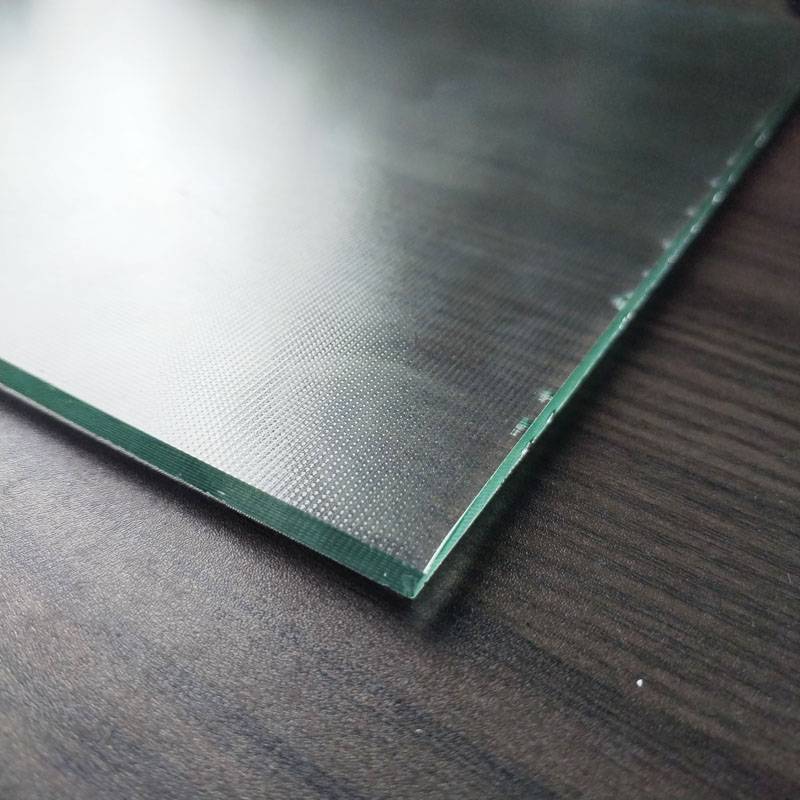Understanding Low-Iron Glass A Transparent Perspective
Low-iron glass, also known as extra-clear or starphire glass, is a specialized type of glass that boasts an exceptional clarity and transparency, setting it apart from traditional silica-based glasses. The term low-iron refers to the reduced iron content in its composition, which is the primary cause of the greenish tint often observed in standard glass products.
Iron oxide, a common impurity in sand, the primary raw material for glass production, gives ordinary glass its characteristic greenish hue. This tint can be particularly noticeable in thick glass sections or when light passes through large areas of glass, such as in windows, aquariums, or display cases. For applications where transparency is paramount, low-iron glass becomes the optimal choice.
Low-iron glass is manufactured by carefully controlling the iron content in the glass mixture. This is achieved by using high-purity raw materials and advanced manufacturing processes. The iron content is typically reduced to less than 0.015% by weight, compared to around 0.1-0.3% in standard glass, hence the 'low-iron' designation.
The result is a glass that is nearly colorless, allowing for a truer transmission of light
The result is a glass that is nearly colorless, allowing for a truer transmission of light

The result is a glass that is nearly colorless, allowing for a truer transmission of light
The result is a glass that is nearly colorless, allowing for a truer transmission of light
 what is low iron glass
what is low iron glass. This clarity not only enhances visual aesthetics but also improves light transmission, making it ideal for applications where natural light is desired, like solar panels, skylights, and architectural designs that emphasize transparency and openness.
In addition to its transparency, low-iron glass also offers other benefits. It has excellent thermal stability, durability, and resistance to weathering, making it suitable for both indoor and outdoor use. Its strong mechanical properties also make it ideal for safety glazing, such as in doors, balustrades, and staircases.
However, it's worth noting that the production of low-iron glass is more complex and costly compared to standard glass due to the higher quality raw materials and processing requirements. This additional cost is often reflected in its price, but the superior clarity and aesthetic appeal it provides often justify the investment.
In conclusion, low-iron glass represents a significant advancement in glass technology, offering architects, designers, and homeowners a new level of transparency and design flexibility. Its unique properties and applications make it a sought-after material in various industries, from construction to renewable energy, where clear visibility and maximum light transmission are crucial. Despite its higher cost, low-iron glass continues to gain popularity due to its unmatched clarity and performance characteristics.
 Afrikaans
Afrikaans  Albanian
Albanian  Amharic
Amharic  Arabic
Arabic  Armenian
Armenian  Azerbaijani
Azerbaijani  Basque
Basque  Belarusian
Belarusian  Bengali
Bengali  Bosnian
Bosnian  Bulgarian
Bulgarian  Catalan
Catalan  Cebuano
Cebuano  Corsican
Corsican  Croatian
Croatian  Czech
Czech  Danish
Danish  Dutch
Dutch  English
English  Esperanto
Esperanto  Estonian
Estonian  Finnish
Finnish  French
French  Frisian
Frisian  Galician
Galician  Georgian
Georgian  German
German  Greek
Greek  Gujarati
Gujarati  Haitian Creole
Haitian Creole  hausa
hausa  hawaiian
hawaiian  Hebrew
Hebrew  Hindi
Hindi  Miao
Miao  Hungarian
Hungarian  Icelandic
Icelandic  igbo
igbo  Indonesian
Indonesian  irish
irish  Italian
Italian  Japanese
Japanese  Javanese
Javanese  Kannada
Kannada  kazakh
kazakh  Khmer
Khmer  Rwandese
Rwandese  Korean
Korean  Kurdish
Kurdish  Kyrgyz
Kyrgyz  Lao
Lao  Latin
Latin  Latvian
Latvian  Lithuanian
Lithuanian  Luxembourgish
Luxembourgish  Macedonian
Macedonian  Malgashi
Malgashi  Malay
Malay  Malayalam
Malayalam  Maltese
Maltese  Maori
Maori  Marathi
Marathi  Mongolian
Mongolian  Myanmar
Myanmar  Nepali
Nepali  Norwegian
Norwegian  Norwegian
Norwegian  Occitan
Occitan  Pashto
Pashto  Persian
Persian  Polish
Polish  Portuguese
Portuguese  Punjabi
Punjabi  Romanian
Romanian  Russian
Russian  Samoan
Samoan  Scottish Gaelic
Scottish Gaelic  Serbian
Serbian  Sesotho
Sesotho  Shona
Shona  Sindhi
Sindhi  Sinhala
Sinhala  Slovak
Slovak  Slovenian
Slovenian  Somali
Somali  Spanish
Spanish  Sundanese
Sundanese  Swahili
Swahili  Swedish
Swedish  Tagalog
Tagalog  Tajik
Tajik  Tamil
Tamil  Tatar
Tatar  Telugu
Telugu  Thai
Thai  Turkish
Turkish  Turkmen
Turkmen  Ukrainian
Ukrainian  Urdu
Urdu  Uighur
Uighur  Uzbek
Uzbek  Vietnamese
Vietnamese  Welsh
Welsh  Bantu
Bantu  Yiddish
Yiddish  Yoruba
Yoruba  Zulu
Zulu 

 The result is a glass that is nearly colorless, allowing for a truer transmission of light
The result is a glass that is nearly colorless, allowing for a truer transmission of light
The result is a glass that is nearly colorless, allowing for a truer transmission of light
The result is a glass that is nearly colorless, allowing for a truer transmission of light